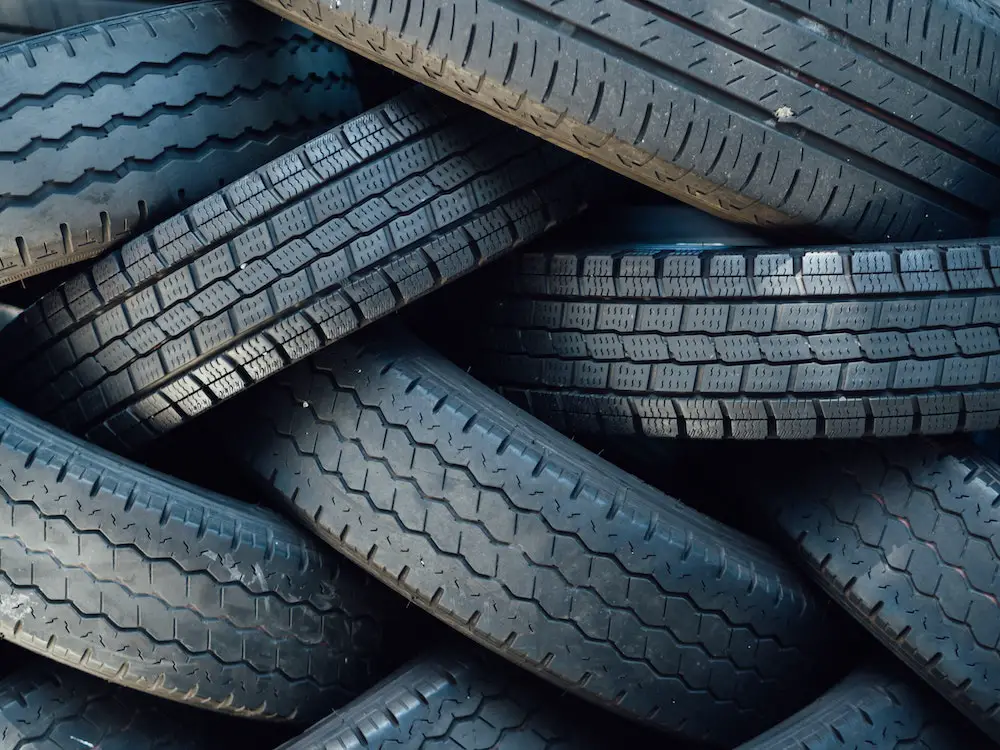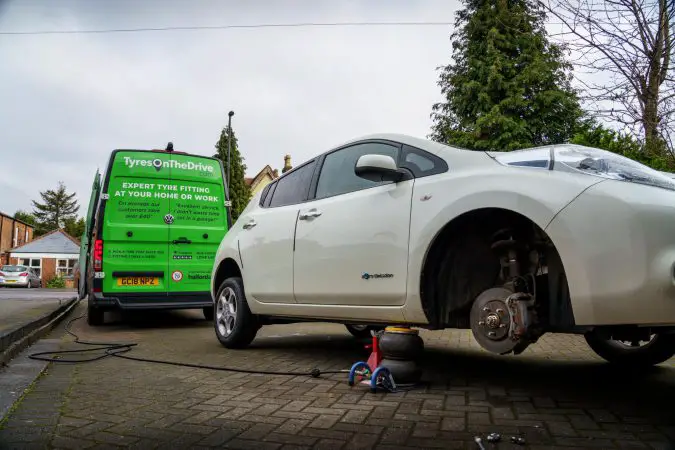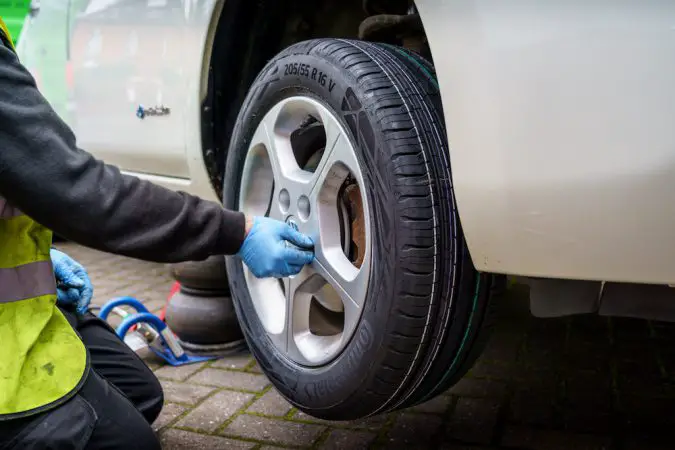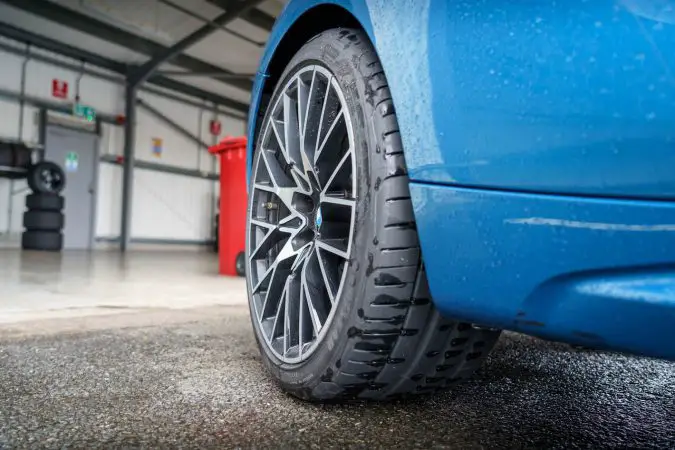It’s continually surprising how often we ignore the regular needs and maintenance of our tires. For the very thing that keeps our cars gripped onto the roads, which not only helps it shove along nicely but also ensures we don’t just slide around like we’re on roller skates, we haven’t really been paying much attention to our tires, have we? What do we do, for instance, when there’s inner tire wear?
Since their early conception, tires have come a long way. It’s not just the chemistry and science in that rubber compound, either. However, the actual design of tires too has made it more efficient. And rather crucially, modern-day tires that we take quite for granted these days are more predictable. Thus, we know exactly how they wear, when to replace them, and appreciate their longevity.
Therefore, it’s safe to say that inner tire wear isn’t normal. But what if you walk over to your car one morning, have a peek, and notice how the inside of the tires are wearing out its treads much quicker than the outer sections? What’s causing your tires to experience what should be abnormal inner tire wear? Moreover, what can you do to rectify this alarming issue? Well, let’s try to find out…
- What Is Tire Wear?
- Factors Affecting Wear
- Spotting Inner Wear
- Potential Causes
- Fixes & Costs
- Conclusion
What Do We Need To Understand About Inner Tire Wear, And Treadwear In General?
Before we get into the specifics of inner tire wear, it may benefit us to understand how treadwear works in general. As we know, tires are made to contact and grip onto the road. As we apply more throttle, braking, steering, and so forth, your car’s movements are exerted by the tires. It can then sufficiently create traction onto the surface below and translate your inputs into motion.
Tires are among those replenishable items on your car, just like the battery or the brake pads. As you continually accelerate, brake, turn, or even just cruising along, the rubber compound of the tires wears down. This is a side effect of all that traction you’re getting, and it’s quite normal for your tires to wear out over time. That’s not to mention the entire load of the car is put onto it.
Between keeping your car in place, and hustling it down a corner at speed without losing control, the tires can’t last forever. Estimates do vary as to how long they last, depending on the manufacturer of your tires, the type of rubber it is, its age, how you drive it, and so forth. Generally, you’re advised to swap out the tires at least every six years, or somewhere between 25,000 to 50,000 miles.
How Do External Factors Affect Your Tire’s Wear, And Contribute To Inner Tire Wear?
Once again, it’s hard to find a one-size-fits-all figure for how long car tires can last. Some say that tires should be changed as few as every 5,000 miles. Others, meanwhile, say that some tires could easily last 10 years if you don’t use them often. At the end of the day, our aforementioned six years and 25,000 to 50,000 miles quote is the best – and most responsible – interval that we can find.
There are, after all, countless factors that affect how quickly your tire wears. Additionally, learning these may give us more insight as to why you might be experiencing inner tire wear. Here are some of the most common factors that ultimately lead to how quickly (or how long) your tires can last…
1. Brand And Make Of The Tires
There are numerous different companies out there making tires, and each of them has its unique mixture of rubber compounds. Some of these tires are more performant, while others are geared to being used in commercial vehicles. Each tire is designed to work differently.
This also affects its rate of wear. Certain tires are formulated to have a longer lifespan and are made out of harder compound rubber. They’re a bit louder and slightly discomforting compared to softer rubber, but they may last longer.
2. Positioning Of The Tires
Now, this is something that we’ll explore in greater depths later on to discover more about inner tire wear. But for now, let’s look at how the positioning of the tires affects their wear. Commonly, most will find that the front tires will almost always wear out faster than the rear.
That’s simply because the front tires have to manage both the steering and contribute the most to braking. These two alone are enough to wear it down faster than your rear tires, even if you’re privy to doing burnouts now and then.
This extent of frontwards wear is exacerbated if you have a front-wheel-drive car. Now, your front tires will also have to put the power down. It’s natural that your front tires wear out faster, and this is why we undertake regular tire rotations to swap them around with the fresher tires at the back.
3. Weight And Load Of The Vehicle
As we highlighted earlier, your tires also double to bear the weight of your vehicle. After all, it can’t escape the laws of gravity. Thus, the outright mass of your car will also impact how quickly your tire wears. If you have a heavier vehicle, the rotation of the tires undergoes greater stress.
Therefore, the wear hastens as a result. It’s not just the natural weight of your car, too. If you’re one to hitch onto trailers or carry around a load of stuff – such as heavy furniture – then your tires will go through more strain. Even if it’s just temporary, it can affect the rate of wear.
4. The Tire Pressure
It’s beyond important that you always stick to your tire’s recommended pressure levels. Make it a habit to regularly check to see if your tire’s PSI – or kPa, depending on where you’re from – is in line now and then. On the surface, the right pressure can affect comfort and performance.
But underneath, it could also reduce the amount of wear, as well. If your tires are underinflated, they’ll wear out faster. Once it’s below whatever the recommended PSI levels are, the tires become more flabby than they should be and adds increased surface area onto the road.
This has two effects. For one, that higher contact patch will create more friction and increases the temperatures of the tire. Secondly, the rubber compound isn’t taut anymore, as it flexes around and stretches loosely, as it’s not been inflated the whole way.
On the flip side, too much pressure isn’t a good thing, either. Overinflating your tires will decrease the contact area between the tire and the road. Therefore, this smaller surface area needs to try and compensate for all the lost traction, making that zone wear quicker than the rest.
5. Driving Style And Speeds
I think it’s quite easy to comprehend that how we treat our cars will impact the rate of tire wear. For instance, driving at higher speeds will increase the heat in the tires by a significant degree. This can accelerate tire wear. Your driving style matters, too.
Taking corners aggressively, doing power slides or drifts, burnouts, rapid and smoky acceleration, or hard braking are all variables that quicken the rate of tire wear. Be more gentle and moderate at the helm, and you’ll soon find how long-lasting tires can be.
6. Poor Alignment Of The Wheels And Tires
Alignment is quite a complex topic in itself, and one we’ll get into a lot of detail later to explain how inner tire wear appears. In essence, it’s an art of trying to realign the suspension, while also including some adjustments made to the balancing of the wheels and tires.
To put it simply, the only goal of an alignment procedure is to ensure that the tires are straight and true, without any crookedness in the system. Poor alignment can – among other side effects – result in increased tire wear.
7. Using The Wrong Type Of Tires
As you might’ve seen before, tires have different seasonal variations. These tire types can be boiled down to summer, winter, and all-season rubber. Each one is formulated to work their best in varying climates or weather conditions.
For instance, summer tires can extract the most of your car’s performance, but only when the roads are dry – or even a tad rainy – out. Meanwhile, swapping them out with winter tires when the snow falls afford you enhanced traction for snowy or icy roads. All-seasons are the best of both worlds.
What you might not have noticed is that using the wrong type of tire at the wrong season and time will make it wear faster. That’s mostly down to their operating temperature, and how the tires have been designed chemically.
For instance, winter tires are engineered to stay soft and flexible, even at low temperatures. Using them when the seasons turn hot and sunny is a bad idea. Not only will the added heat wear it down quicker, but as with underinflated tires, the softer and more stretchy rubber will wear faster, too.
How Can You Spot Inner Tire Wear?
Having looked at the common factors contributing to overall tire wear, it’s time we get into detail about what causes inner tire wear. We’ve mentioned already that this is abnormal, as tires are meant to wear evenly across the entire width of the rubber. Seeing more extensive wearing along the inside of the tire is an indication of there being faults within the system.
You may notice this by the intense balding effect along the inner section of the tires – where it meets the suspension bits if you aren’t yet aware. You may see that the treads here are shallower than the rest. If the inner tire wear is still newly exhibited, its appearance may be quite subtle. If you’d like to be very certain, you can try to perform a few tests to see if it’s becoming a problem.
In most cars in the US, the tread depths are around 10/32” or 11/32”. For some other vehicles, their matching tires – such as for heavy-duty trucks, SUVs, or winter tires – may have deeper grooves for the treads. Legally, the US Department of Transportation (DoT) recommends changing out your tires when the treads fall below 2/32” in depth.
Should you spot something amiss, you can inspect this in person. There are a few tread depth gauges that you could buy online for little to no cost. Some are quite simple, relying on color codes to tell you how deep the treads are. Others are more sophisticated, with an accurate LCD read-out. These are great tools to have around in the garage.
Otherwise, you could instead do this for free – perhaps not as accurately, but close enough – with a penny…
Using The Penny Test To Measure Your Car’s Treadwear
- First, have a penny on hand, and turn it so Abe Lincoln’s head is pointing towards the tires, into the treads.
- Now, slot that penny into the treads, positioned between the ribs of the tires. Those “ribs” are the raised portion of the tires, flanking the grooves.
- As you place the penny in there, give it a bit of pressure – not too much – until it goes all the way in.
- Once that’s done, inspect how deeply the penny’s been inserted. More specifically, see if the top of Lincoln’s head disappears between the ribs.
- If the tip of his head isn’t visible – just below the hairline, around the middle of the forehead – then your tread depth is still at the safe (and legal) threshold of 2/32”.
- Otherwise, and if you can see his entire head up to the tip of his hair, you’re going to need a new set of tires.
- When you’re doing the penny test, don’t just check one section of the tire, and look out for the most worn-out areas. Even if most of the treads are fine, just one side of the treads being below the 2/32” limit is unsafe and illegal.
What’s Causing You To Experience Inner Tire Wear?
It might surprise you to learn that excessive inner tire wear is among the most common problems that most around the world have faced with their tires. Year on year, many undergo similar issues, but they seldom realize what’s causing inner tire wear. So, and should you be experiencing this woe for yourself, here are some typical causes for inner tire wear…
1. Too Much, Or Wrong Camber Angle
In suspension-speak, camber is the measurement pertaining to the vertical lean of your car’s tires. If you’re looking at this directly from the front or rear of the car, you could spot one of two things with your car’s camber:
Positive Camber – This is where the tire is angled outwards and away from the car at the top, where it sticks out further than the bottom.
Negative Camber – This is where the tire is angled inwards into the car at the top, where it sticks in further than the bottom.
Adjusting the camber is widespread in cars, especially to tune it for better performance or handling. Having the tires be leaning inwards, for example, helps to make it more stable at higher speeds. That said, and for most of us out there, modifying the camber is unnecessary. Ideally, you’d want the camber to be set at neutral, where the tires can sit flat on the road, without any lean to them.
However, they can lean incidentally if you haven’t done an alignment in a while. For inner tire wear, we can blame negative camber for this. After all, and as it leans inwards at the top, the inner zones of the tires will have the most amount of contact on the road. This portion will naturally wear itself out much quicker than the rest.
2. Too Much, Or Wrong Toe Angle
Another suspension-related fault that may result in inner tire wear is your car’s toe settings. In contrast to camber, toe describes the horizontal leaning of the tires in relation to one another. Let’s once again stand at the front of the vehicle, and pay attention to the extreme edges of the tires. You’ll spot one of two things:
Toe-In – This is where both tires are angled horizontally to be pointing inwards into the car, and towards each other.
Toe-Out – This is where both tires are angled horizontally to be pointing outwards away from the car, and thus away from each other.
As with camber, toe angles can be intentionally fine-tuned for the sake of changing the car’s agility and handling characteristics. However, most people shouldn’t experience this, and the toe can go out of alignment if it hasn’t been calibrated in a while. As with camber, you’d ideally want the toe angles to be set in a way that the tires are always pointing straight and true.
In the case of inner tire wear, too much toe-out could be the cause. In this scenario, the tires are pointing outwards, away from the car. As such, the inner sections of the tire are essentially being dragged along the tarmac. Owing to increased friction with the road surface, the inner portions of the tire will have accelerated wear over the rest.
3. Worn-Out Or Faulty Ball Joints
As a part of both the suspension and steering system, the control arms are what connect the wheels to the actual car. Sandwiched in there are the ball joints, which help to connect the lower and upper control arms to the steering knuckles. Ball joints are usually designed as a ‘ball and socket’ type, with the aim of reducing any play or looseness in the ball joints as a whole.
In effect, this makes sure your wheels can keep rolling as smoothly as possible. However, ball joints can wear over time with excessive use and could fail if not replaced. When it does fail, there will be some play in the wheels. Once that happens, it enables unintended movement and looseness in the wheels, and affects the camber or toe angle, as we spoke of previously.
Typically, a failed or worn-out lower ball joint is what causes inner tire wear, as far as ball joints are concerned. By reducing their grip on the wheels, they can cause rapid changes and play in the angles of toe and camber as you drive along. Consequently, you’ll start to notice inner tire wear. Aside from that, you may also hear odd suspension noises over bumps, or unusual vibrations in the steering.
4. Worn-Out Or Faulty Control Arm Bushings
Speaking of control arms, we could also blame inner tire wear on the control arm bushings. It’s the control arms that join together the vehicle’s chassis and the steering knuckles, so it’s vital that we’re diligent in taking good care of it. There are lower and upper control arms. Both are fitted with rubber or elastomer bushings at their respective pivot points.
These bushings serve to dampen the vibrations and shock normally induced on the control arms. On top of that, they also protect it from impact by debris, as well as reducing exposure to the elements. Additionally, the bushings aid in preventing too much free play in the control arms. Over time, and as with the ball joints, these control arm bushings can wear out and fail.
As they gradually deteriorate, free play will slowly creep into the control arms. Now, your camber or toe settings could start bouncing around again. When you drive along, this play will quickly eat away at your tire treads, most especially along the inner sections. You might also feel some odd vibrations or noises through the steering wheel, or while the suspension is hard at work.
How Can You Fix Inner Tire Wear, And How Much Would It Cost?
Having now understood what’s causing inner tire wear, you’d surely be interested in trying to get it fixed, don’t you? On the bright side, this could be a relatively inexpensive repair, aside from having to replace your tires, of course. If you notice that the camber and toe angles are out of whack, all you need to do is send it down to the local workshop for an alignment.
For most cars, you can get away with a simple two-wheel alignment, which should cost you around $50 to $75. Even Walmart has these services, and they’re quite good at it, too! For all-wheel-drive or 4×4 vehicles, we’d recommend a full four-wheel alignment. This should bring the expense up to $100 to $150 on average. Preferably, you should get an alignment done once a year or every 5,000 miles.
If your suspension itself is at fault for causing inner tire wear, the repairs will be quite costly. A new set of ball joints or control arms, for example, will cost you at least $350 to replace. That’s for a set of four, including labor and parts. However, and depending on the particular set-up of your car, it may cost you nearly $2,000 to replace the ball joints and control arms for all four corners.
Although, you could spring up for cheaper DIY rebuild kits for around $400 or less. By some chance, if other major parts of the suspension are at fault, these too could cause inner tire wear. Faulty shocks and struts, for instance, could sag the wheels low enough to drag around the inner areas of the tire. A full set of four shocks and struts could cost you anywhere from $200 to $1,500, at the very least.
Understanding and Fixing Inner Tire Wear
- Tires are crucial to the performance and safety of a vehicle, as the entire car is connected to the road through four pieces of rubber.
- Inner tire wear can occur due to negative camber, worn ball joints, misaligned wheels, incorrect toe settings, worn tie rods, improperly inflated tires, and faulty shocks and struts.
- To fix inner tire wear, a wheel alignment, tire inflation, regular wheel balancing, and suspension component inspection may be necessary.
- Rotation of tires every six months is important to ensure they last longer.
- A professional inspection is recommended before buying a new set of tires, as the problem may require specialized equipment to fix.
- Unevenly worn tires are hazardous and increase the risk of tire blowouts.
- The legal minimum tread depth is 2/32 of an inch in most states, but regardless of regulation, tires should not be driven below this depth.
- The cost to fix inner tire wear varies depending on the cause and may range from $60 to over $2,000.
- To determine the cause of inner tire wear, it is necessary to inspect all components and measurements associated with tires, as well as to check for damage.
- An experienced repair shop is recommended for fixing issues with inner tire wear, especially if the issue is difficult to pinpoint.
Inner Tire Wear – Conclusion
In all, inner tire wear is a silent killer. Some might not notice it until it’s too late. With fewer effective treads to work with, this seemingly minimal wearing can impact your braking performance, especially on wet or snowy roads. With less traction and more slippage, accidents are bound to happen. As the treads disappear, heat could build up, and combined with tire degradation, it may lead to blowouts.
Even if you don’t mind the extra risk of danger, the effects could be felt elsewhere, as well. On worn treads, you’ll notice a reduction in performance, both in straight-line speed and in the corners. There will be discomfort and an increase in fuel consumption. It’s thus important to have your tires looked at whenever you notice inner tire wear. Just one single penny might save your life.




